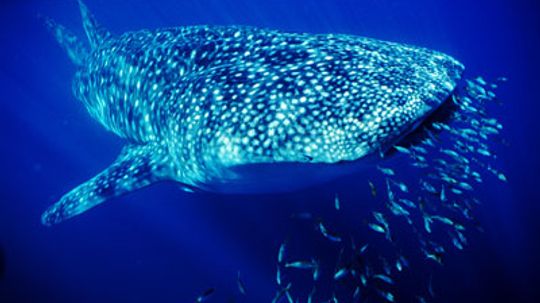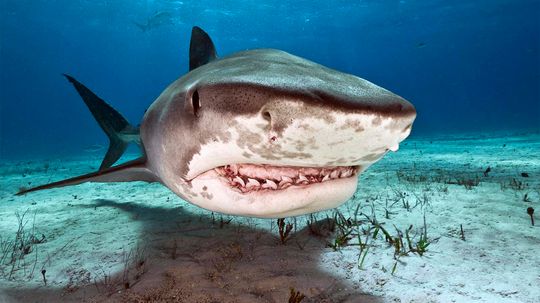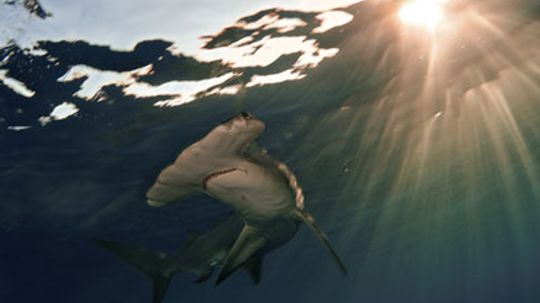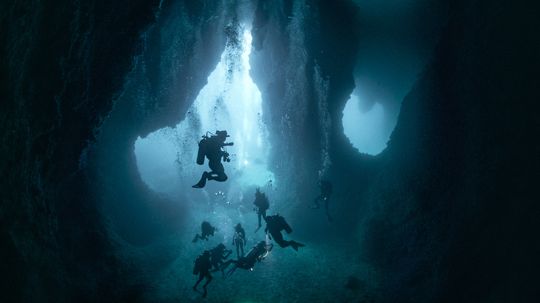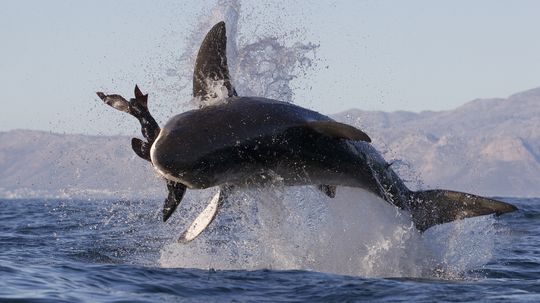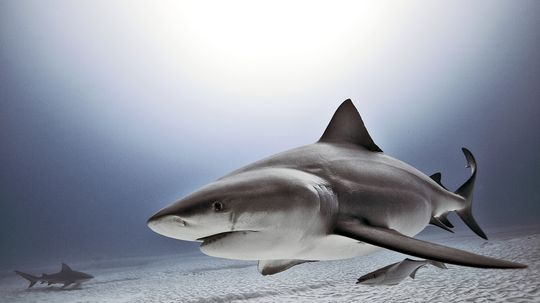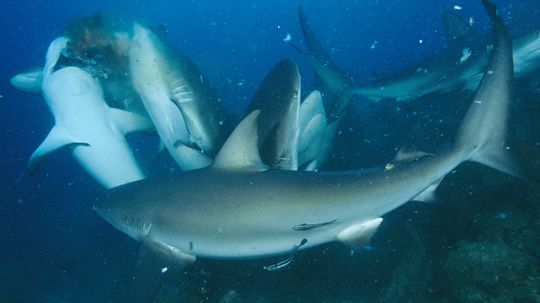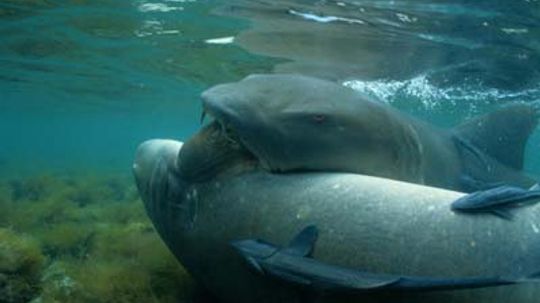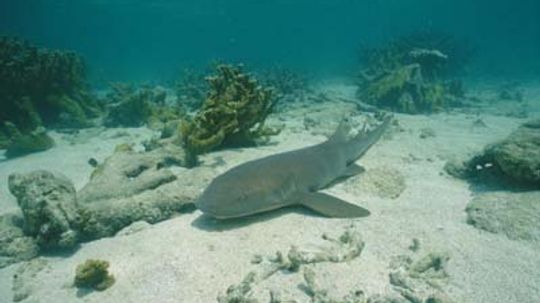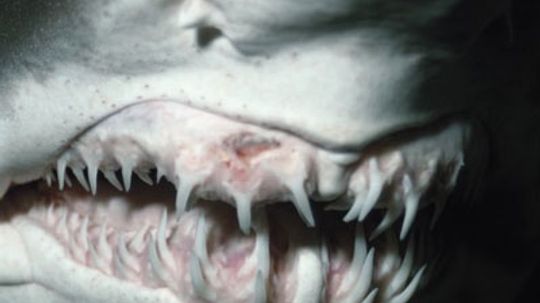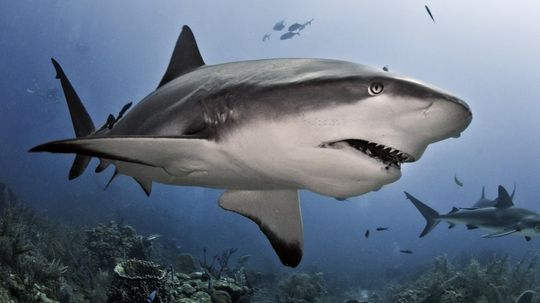Sharks
Sharks come in all sizes, from the tiny spined pygmy to the 40-foot whale shark, but the great white is hands-down the most famous, thanks in no small part to a little movie called "Jaws."

Swai vs. Catfish: One Is Much Better for You (and for the Planet)
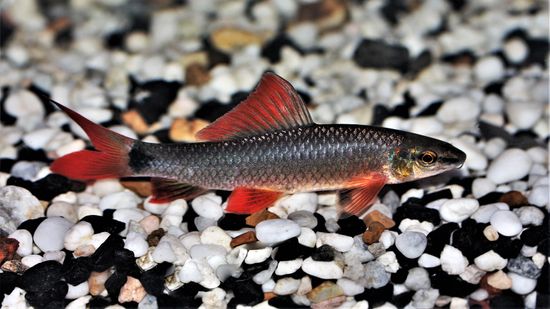
Rainbow Shark: Closer to a Minnow Than a Great White
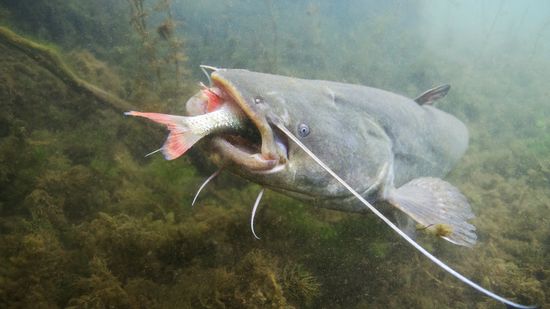
The Biggest Catfish Ever Caught (So Far)
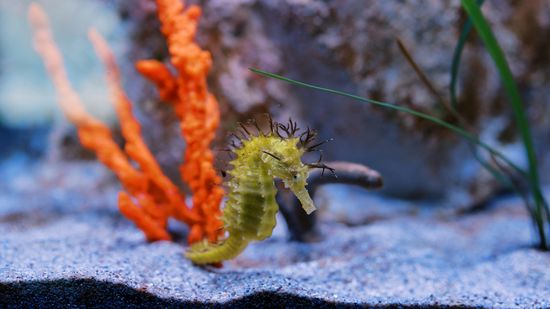
A Pet Seahorse Requires Extremely Specific Tank Conditions

The Seahorse Diet Requires Stealth and Patience in the Wild

Is a Seahorse a Fish?
Learn More / Page 2
Perhaps you prefer a nice filet mignon with a red wine reduction, but according to one source, dogs are a shark's favorite meal. Where do they find pups in the deep?
By Josh Clark
The biggest shark in the world is longer than a school bus. But taking people to sea to swim with these giants has become a big industry.
You've heard the stat. You're more likely to be struck by lightning than be attacked by a shark. Still, wouldn't it be nice to know that your next aquatic destination doesn't fall on this list?
Advertisement
Even the most maniacally energetic people can appreciate crashing on the couch occasionally. Can sharks take the same break without dying?
Sharks have a bad reputation, but is it warranted? Maybe for these 10, which are considered the most dangerous of all.
Hammerheads have itty-bitty mouths, a tall dorsal fin and an impressively odd noggin. Why do these creatures of the deep look so strange?
The good news is, you're not likely to meet with one of these creatures on your next beach vacation. If you did, it wouldn't be a pretty sight.
By Cristen Conger & Ada Tseng
Advertisement
They range in size from 8 inches to 60 feet, so obviously their food preferences will differ. Sometimes what seems like a good meal, isn't, so they spit it out. That includes humans.
Ever wonder -- as you're treading water in the ocean -- how a shark might hunt you down? They have a special sense that helps them locate prey.
The lure of a free meal is enough to get most of us moving and maybe even throwing an elbow or two as we battle for the last slice of pizza. Compared to sharks though, our feeding frenzies are tame.
Sharks have been around longer than the dinosaurs. After a few hundred million years, it's humans that might kill them off.
Advertisement
People are so fascinated with this fierce, fast ocean predator that they've lowered themselves into steel cages to observe it up close. If you read this article though, you won't have to do that.
You think you and your siblings don't get along? Try being a shark. You might not even make it out of the womb without your brother or sister eating you.
Mellow probably isn't the first word that you think of when it comes to sharks, but these slackers of the sea could change your mind. What's their life of leisure like?
Great whites are the flashy man-eaters of the silver screen. But bull sharks may be the most dangerous, with a dinner menu that sometimes consists of sloths, dogs and cows. What can you say? They're opportunists.
Advertisement
Sharks can have up to 15 rows of teeth growing behind their front row of chompers, so it's no surprise how many shark teeth litter beaches. But why do people collect them?
You don't reign supreme over the marine food chain without acute senses that can smell blood or hear injured prey from great distances. And sometimes a "sixth sense" doesn't hurt either.
Have you ever been so hungry that you could eat anything? How about a hubcap? Or maybe a suit of armor? If you said "yes," you might have something in common with the second deadliest shark.
Sharks are an intelligent and sometimes dangerous species of saltwater fish. Learn more about these often feared, often misunderstood creatures of the deep in this gallery.
Advertisement
The oldest shark fossils date from more than 300 million years ago, before the dinosaurs. A few species have kept the same physical characteristics for more than 150 million years. How have they survived so well?
By Tom Harris

